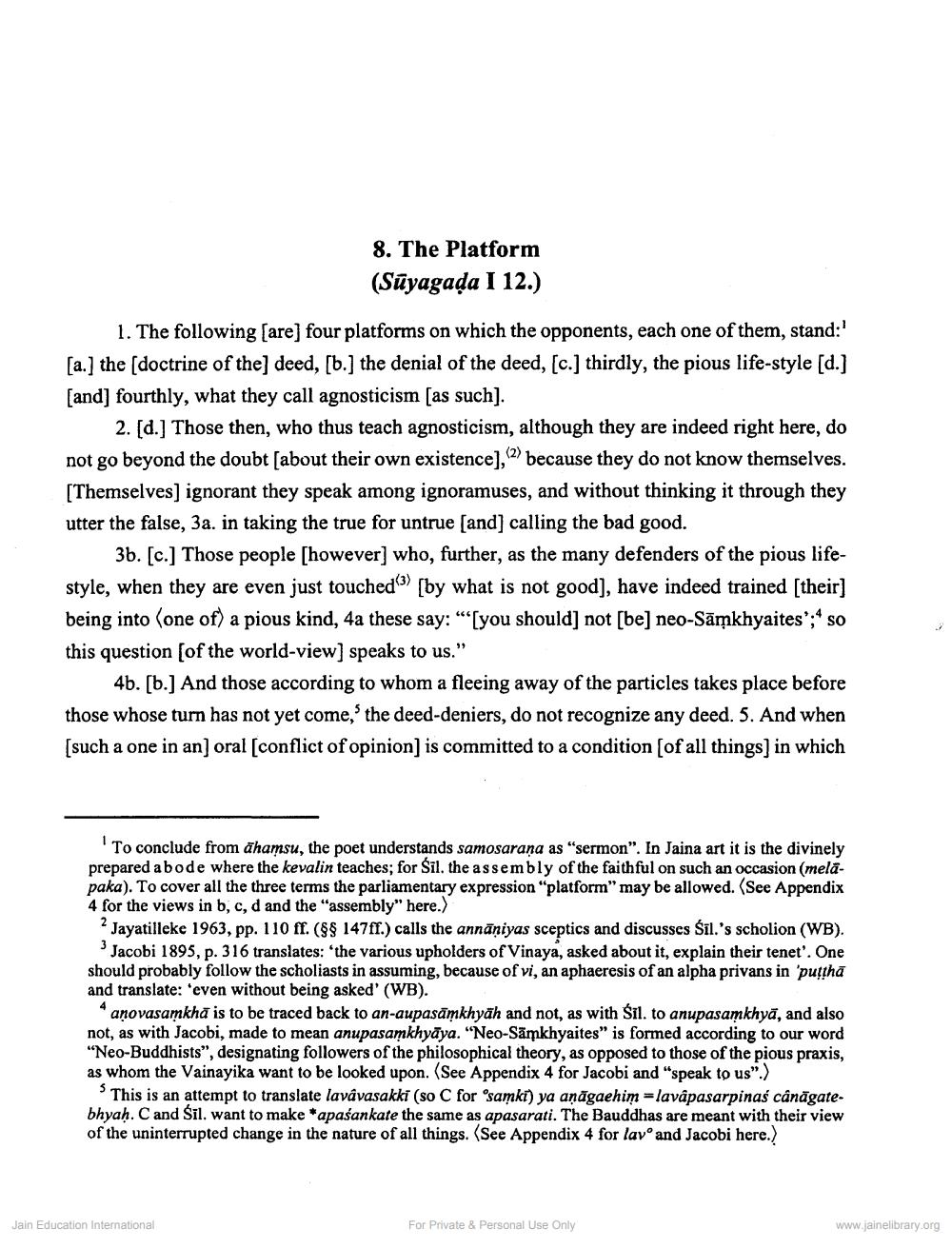________________
8. The Platform (Süyagada I 12.)
1. The following (are) four platforms on which the opponents, each one of them, stand:' [a.) the (doctrine of the) deed, [b.) the denial of the deed, (c.) thirdly, the pious life-style [d.] [and] fourthly, what they call agnosticism [as such).
2. [d.] Those then, who thus teach agnosticism, although they are indeed right here, do not go beyond the doubt (about their own existence], because they do not know themselves. [Themselves) ignorant they speak among ignoramuses, and without thinking it through they utter the false, 3a. in taking the true for untrue [and] calling the bad good.
36. [c.] Those people [however] who, further, as the many defenders of the pious lifestyle, when they are even just touched [by what is not good), have indeed trained (their) being into (one of) a pious kind, 4a these say: “[you should] not [be] neo-Sāmkhyaites”;" so this question (of the world-view] speaks to us."
4b. [b.] And those according to whom a fleeing away of the particles takes place before those whose turn has not yet come, the deed-deniers, do not recognize any deed. 5. And when (such a one in an oral (conflict of opinion) is committed to a condition (of all things in which
To conclude from ahamsu, the poet understands samosarana as "sermon". In Jaina art it is the divinely prepared abode where the kevalin teaches; for Śīl. the assembly of the faithful on such an occasion (melapaka). To cover all the three terms the parliamentary expression "platform" may be allowed. (See Appendix 4 for the views in b, c, d and the "assembly" here.) ? Jayatilleke 1963, pp. 110 ff. ($$ 147ff.) calls the annāņiyas sceptics and discusses Sīl.'s scholion (WB).
Jacobi 1895, p. 316 translates: 'the various upholders of Vinaya, asked about it, explain their tenet'. One should probably follow the scholiasts in assuming, because of vi, an aphaeresis of an alpha privans in 'puthā and translate: 'even without being asked' (WB).
anovasamkhā is to be traced back to an-aupasāmkhyāh and not, as with Śil. to anupasamkhyā, and also not, as with Jacobi, made to mean anupasamkhyāya. "Neo-Samkhyaites" is formed according to our word "Neo-Buddhists”, designating followers of the philosophical theory, as opposed to those of the pious praxis, as whom the Vainayika want to be looked upon. (See Appendix 4 for Jacobi and "speak to us".)
This is an attempt to translate lavávasakki (so C for osamki) ya aņāgaehim =lavapasarpinas cânāgatebhyah. Cand Sil. want to make apasankate the same as apasarati. The Bauddhas are meant with their view of the uninterrupted change in the nature of all things. (See Appendix 4 for lavo and Jacobi here.)
Jain Education International
For Private & Personal Use Only
www.jainelibrary.org




